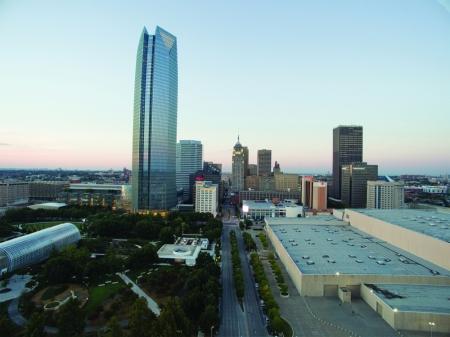
The lingering question for the Oklahoma City office market is “Where’s the bottom?”.
The first half of 2010 suggests that perhaps it is now for the suburbs. Unfortunately, that may not hold true for the Central Business District as that submarket still faces the impact of Devon Energy’s relocation to its new headquarters building in 2012. A move that will place over three-quarters of a million square feet of vacant office space back on the market.
The good news for the suburbs comes not so much from the first-half results as it does from increased activity and a renewed level of commitment from local tenants. The results of that increased activity should become evident in the next few months as we anticipate suburban vacancy rates will begin to drop. It is also worth noting that many tenants who were signing one-year extensions to their leases while they waited out the economic downturn are now back to extending their leases to three to five-year terms. That increased level of commitment seems to have arisen from a renewed confidence in their own ability to function in these tough economic times and also to take advantage of a market populated with landlords aggressively seeking quality tenants with attractive lease incentives and reduced rents. Increased occupancy and the resultant increase in rental rates in the suburban markets in the next two to three years could prove to be just the right tonic for the CBD at a time that will coincide with Devon’s vacancy of approximately 840,000 square feet.
As large space options become scarce in the suburbs, many users will seek downtown options; a scenario that has played out several times in the past twenty-five years. By that time, the Project 180 improvements to streets and sidewalks will increase downtown’s accessibility and appeal. And, if Devon sells its corporate headquarters building to a user outside of Oklahoma City as anticipated, the net effect of Devon’s relocation will be greatly mitigated.
The local market experienced negative absorption of 91,000 square feet in the first half of 2010, but the bulk of that (77,000 square feet) occurred downtown. The Northwest submarket, which has typically been a bell cow for the market both in terms of market trends and new construction, actually experienced positive absorption of 58,000 square feet and we anticipate similar growth the rest of the year. The overall vacancy rate increased from 17.1% to 18.0%. The Central Business District’s vacancy rate rose from 24% to 25.4% and the suburban vacancy rose from 13.6% to 14.1%. The Northwest submarket, which is the largest in the suburbs, saw vacancy fall 14.9% to 13.6%. The remainder of 2010 will continue to test the market, but we are confident current leasing activity will translate into positive results.
Many landlords, who were once trying to hold the line on rental rates are now instituting aggressive leasing campaigns that are getting tenants off the sideline and into the game. While that aggressiveness certainly helps, real improvement will not occur until the local and national economies improve and jobs are created. Economic experts seem unable to agree on when that might occur and we certainly won’t pretend to know.
All results should be reviewed in the proper perspective and it should be noted that the Oklahoma City market is performing near the national average of 17.4% vacancy and should hold up favorably as we did not have much of the over-heated development seen in other markets around the country. Many southwestern markets such as Austin, Dallas, Phoenix and Las Vegas became bloated with new construction and now have vacancy rates well in excess of 20%.
Click here to download the 2010 Mid-Year OKC Office Market Summary.




